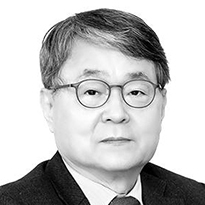
Lee Hang-koo
The author is a senior research fellow at the Korea Automotive Technology Institute.
The Korean government concluded the Korea-U.S. FTA in 2007 after years of recurring trade friction with Washington since the mid-1980s. Despite fierce domestic resistance, the deal took effect in 2012 — a painful but strategic choice. The government was willing to bear the cost to its agricultural and livestock sectors in order to strengthen the manufacturing base that would deliver far greater economic impact. In 2017, the Trump administration demanded revisions, and renegotiations were concluded in 2018.
The results for Korea were clear. Exports of complete vehicles and parts to the United States continued to rise, making a substantial contribution to the national economy. Last year, Korea exported 1.43 million vehicles worth $34.7 billion and auto parts worth $8.2 billion — a record for the industry. But a cloud has now settled over the sector. While the FTA gave Korean cars a price advantage over Japanese and European competitors in the U.S. market, that benefit vanished earlier this month when Washington ended tariff exemptions under the latest round of bilateral negotiations.
![Cars are waiting to be exported at a port in Pyeongtaek, Gyeonggi on Aug. 7. [YONHAP]](https://www.europesays.com/wp-content/uploads/2025/08/24a09970-8e25-4437-9dd6-b9448ab08fe7.jpg)
Cars are waiting to be exported at a port in Pyeongtaek, Gyeonggi on Aug. 7. [YONHAP]
The Trump administration’s repeal of the FTA cannot be met with despair alone. The imposition of high tariffs has set the global auto industry into upheaval, fundamentally reshaping competition. In the first half of this year, Korea’s exports of complete vehicles to the United States fell 16.5 percent in value and 10.7 percent in volume. Auto parts exports, thanks to maximum efforts, slipped by only 1.4 percent. However, the negative effects of tariffs are expected to deepen over the longer term, with a time lag.
Domestic automakers must consider several responses. In the short term, companies may need to accept weaker profitability by lowering export prices to offset tariff costs and minimizing price hikes to stabilize sales and supply chains. This could also ease the time and cost burdens of reorganizing local supply networks in the United States.
In the medium term, increased U.S. production is inevitable as a substitute for exports. Even if Hyundai Motor boosts U.S. output by 500,000 units, that would not offset the 1 million units exported last year. Nor can GM Korea’s 420,000 units of exports easily be replaced. The result would be fewer cars produced domestically, hurting employment and regional economies. This dilemma is unavoidable, given that Trump’s tariff policy is designed to draw direct investment into the United States.
In the long term, cost-cutting is critical to offsetting tariff burdens. Global automakers are already using digital technology and artificial intelligence (AI) to stay competitive against Chinese firms. Companies are embedding AI into every stage of the value chain, reducing or optimizing time, labor, costs and space.
Diversifying export markets is also necessary, though it will take time. Korean automakers must brace for fierce competition with Chinese rivals struggling to enter the U.S. market. Currency depreciation is unlikely to offer relief because Washington keeps a close watch on exchange rates of its major trading partners.
![Hyundai Motor Group Executive Chairman Euisun Chung, left, looks on as Georgia Gov. Brian Kemp autographs a vehicle during a ceremony in Ellaville, the U.S. state of Georgia, on March 26, to open the South Korean carmaker's first dedicated EV factory, Hyundai Motor Group Metaplant America. [HYUNDAI MOTOR]](https://www.europesays.com/wp-content/uploads/2025/08/566417f1-40bc-474f-9223-8fbb73f8bc11.jpg)
Hyundai Motor Group Executive Chairman Euisun Chung, left, looks on as Georgia Gov. Brian Kemp autographs a vehicle during a ceremony in Ellaville, the U.S. state of Georgia, on March 26, to open the South Korean carmaker’s first dedicated EV factory, Hyundai Motor Group Metaplant America. [HYUNDAI MOTOR]
To ride out the “Trump Round” and stay ahead of Chinese competition, the government must expand financial and tax support for the auto sector. Korea’s auto industry generated an estimated 400 trillion won ($290 billion) in sales in 2024, but government support for research and development amounts to less than 1 trillion won. Given the urgency, the government should consider prioritizing a portion of its planned AI budget for the auto sector. Support should be targeted carefully — based on U.S. export capacity, local production commitments, work force expertise and R&D history.
The government also needs to correct its industry statistics. In April, it said Korea had 20,000 auto parts firms. But as of 2024, there were 691 first-tier suppliers and 8,644 firms with at least one employee registered for employment insurance. Roughly 1,500 companies subject to external audits account for 90 percent of total parts industry revenue. That leaves more than 10,000 “parts firms” of unclear status. Without accurate data and well-placed government support, the auto industry cannot escape its current crisis.
This article was originally written in Korean and translated by a bilingual reporter with the help of generative AI tools. It was then edited by a native English-speaking editor. All AI-assisted translations are reviewed and refined by our newsroom.